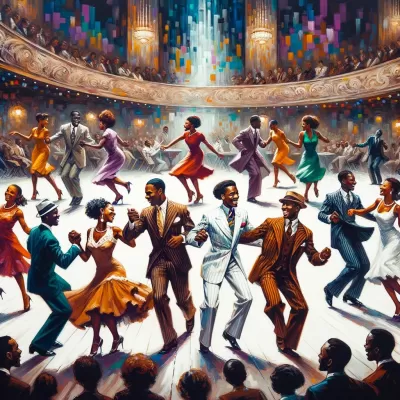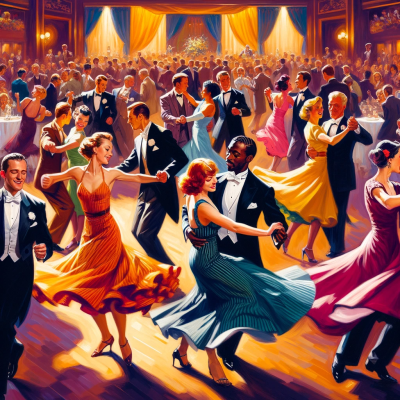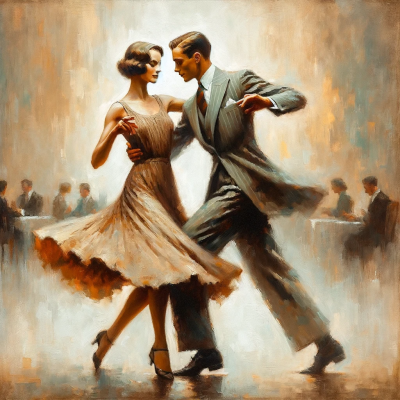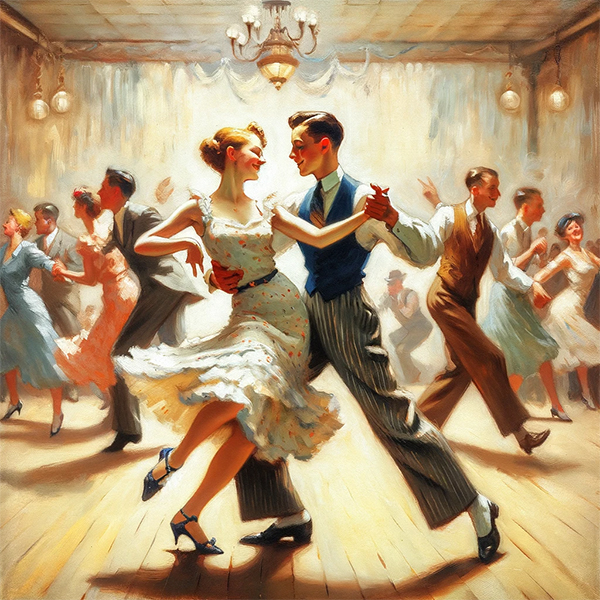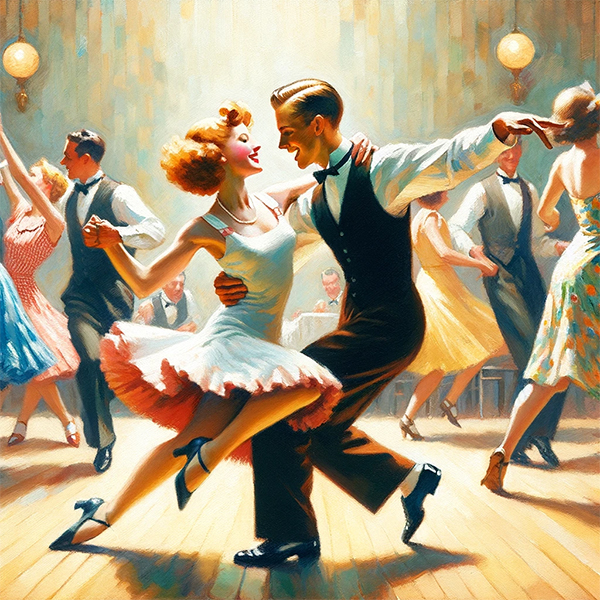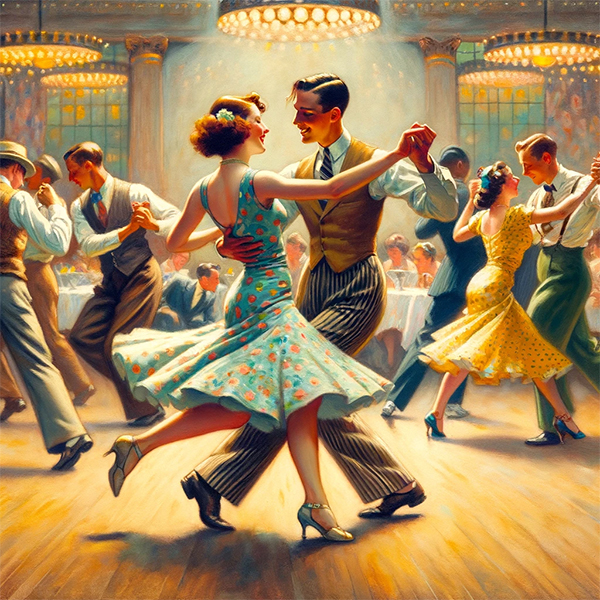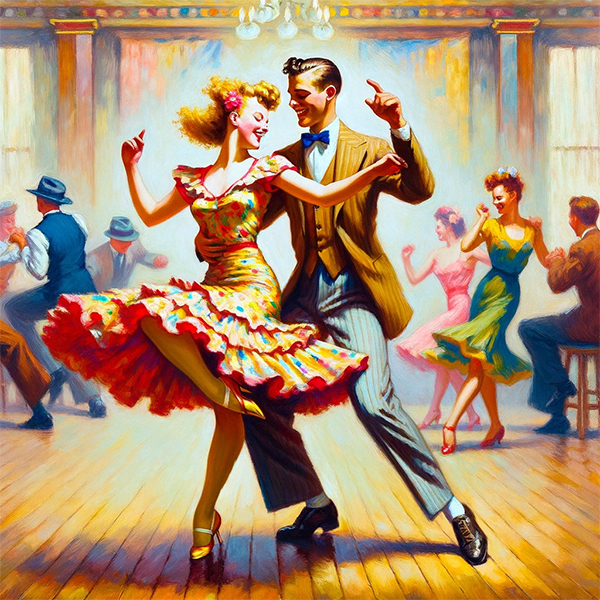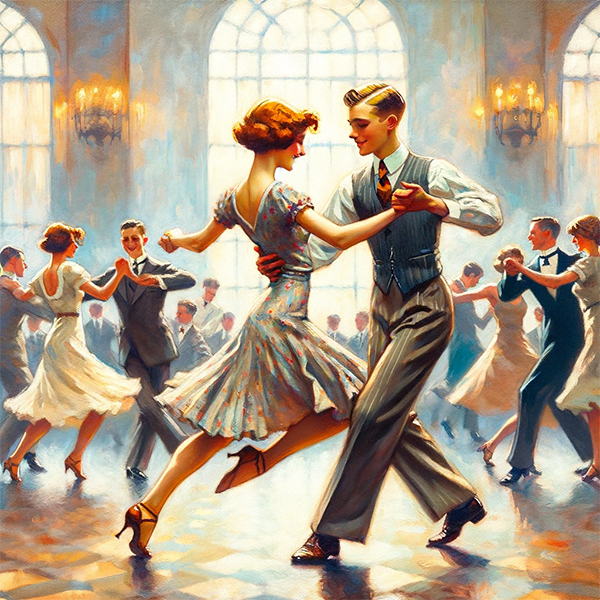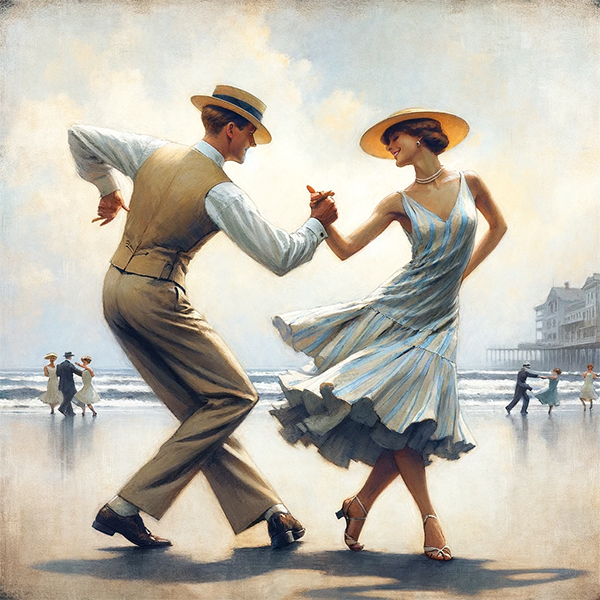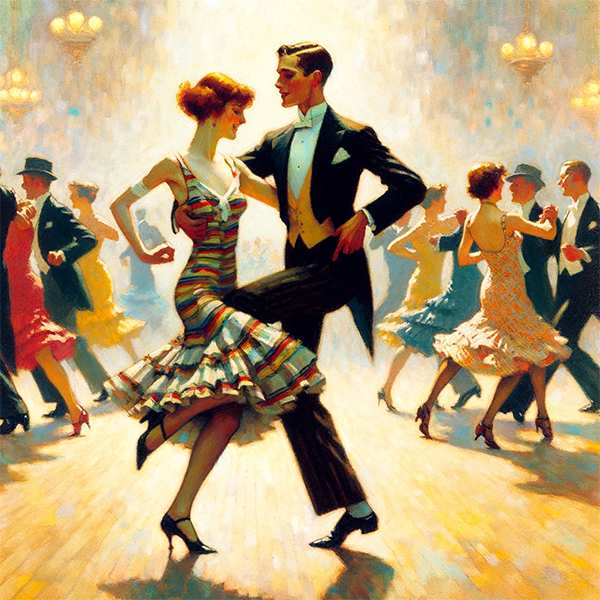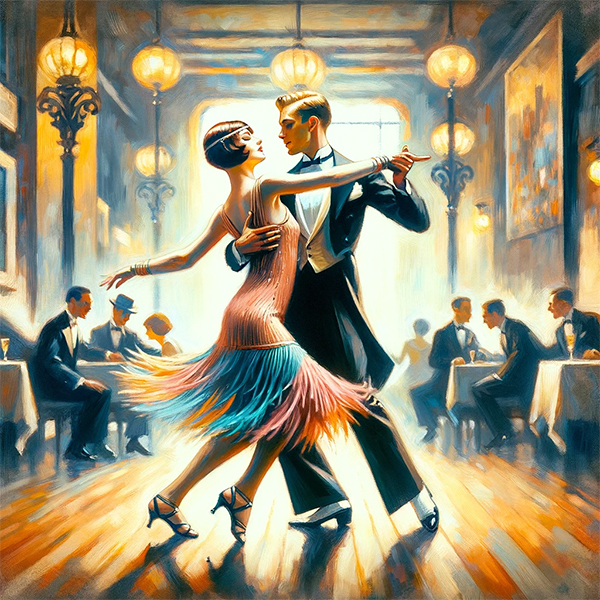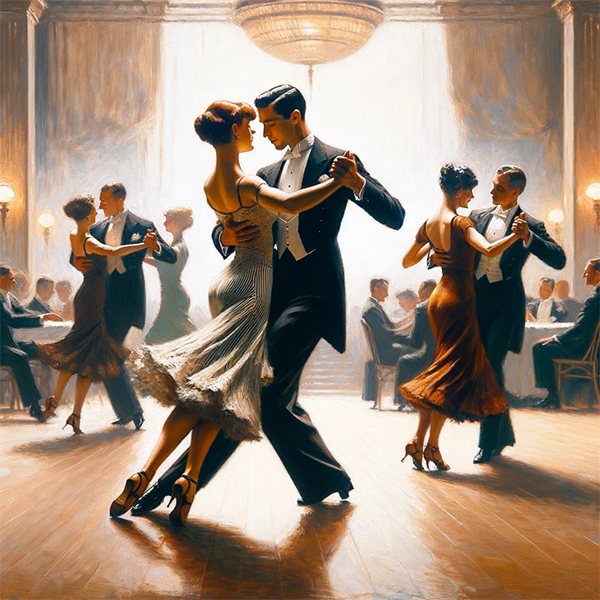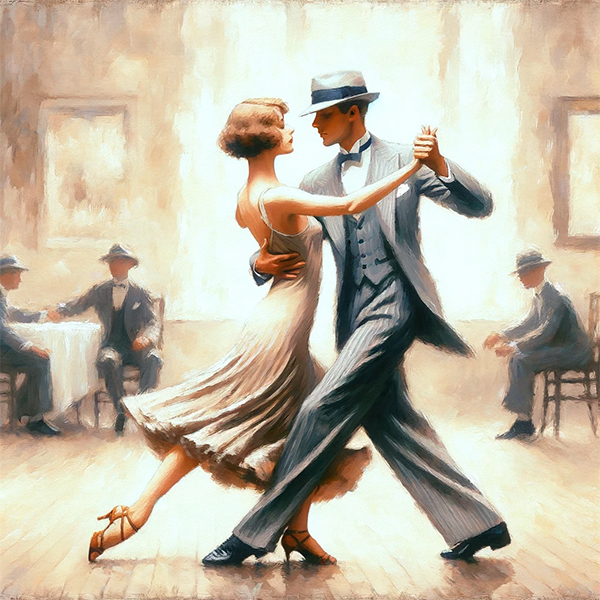Swing Dancing Portal
Featured Swing Articles
Live Video Channel Swing
Dance Subsets - Style, Variations, Types
Swing Dance: A Celebration of Rhythm and Joy
Swing dancing, a captivating and energetic form of dance, has been a symbol of joy and freedom since its inception in the early 20th century. Rooted in the African American communities during the Harlem Renaissance, swing dance blossomed in a time of social and cultural transformation, reflecting the vibrant and dynamic spirit of jazz music.
Swing dance started as a spontaneous and improvisational dance form, often performed to the lively rhythms of big band and jazz music. It quickly gained popularity, spreading across the United States and influencing various dance communities. The dance's infectious energy and exciting movements made it a favorite among young people, symbolizing a break from tradition and a celebration of individuality and expression.
Cultural and Societal Impact
The cultural significance of swing dance is profound. It emerged as a form of resistance and self-expression during a time of racial segregation and economic hardship. It served as a unifying force, bringing people together across racial and social divides. The dance halls where swing was popular became melting pots of culture, where people from diverse backgrounds could share in the joy of dancing.
Swing dance also played a crucial role in the evolution of popular culture, influencing fashion, music, and social norms. The lively and acrobatic nature of the dance led to the development of distinct styles and moves, many of which continue to evolve and inspire dancers worldwide.
Diverse Styles of Swing
Over the years, swing dance has branched into various styles, each with its unique characteristics and cultural influences:
- Lindy Hop: Known for its swingouts, aerials, and improvisational nature, Lindy Hop is the original form of swing dance, embodying the spirited and energetic essence of the genre.
- East Coast Swing: A more structured form of swing with a 6-count step pattern, East Coast Swing is versatile and adaptable to a wide range of music.
- West Coast Swing: Distinguished by its smooth and sophisticated style, West Coast Swing emphasizes musicality and connection between partners.
- Charleston, Balboa, and Shag Varieties: Each of these styles adds unique flavors to swing dancing, from the high-energy kicks of the Charleston to the intricate footwork of Balboa and various Shag dances.
Legacy and Evolution
Today, swing dance continues to thrive, celebrated in dance halls, studios, and competitions around the world. It is not just a dance but a living history, carrying the legacy of its origins while constantly evolving with new influences and interpretations. Swing dance remains a vibrant community, welcoming newcomers and cherishing the joy and freedom that define this timeless art form.

